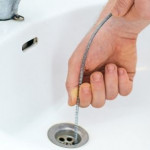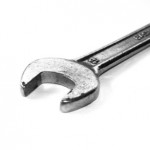Which Statements Are True? Which Statements Are Lies?
At first glance, many plumbing tools look the same, but this couldn’t be any farther from the truth. Each plumbing tool tells a story and has its purpose, design, and importance. Yet, there are many misconceptions about these devices and what they do.
So, now it’s time to play two truths and a lie. After reading three statements, interested parties can decide which two words are factual and which one is pure toilet talk.

Drain Snakes
Here’s the first round:
- The ancient Egyptians used drain snakes to remove clogs in their cities’ plumbing systems.
- If not used properly, a drain snake can damage pipes.
- Some drain snakes measure longer than 50 feet.
The lie? Number one. Drain snakes were invented over 80 years ago by a plumber. His wife called the invention the “Roto-Rooter” because it was able to cut through and clear tree branches in sewer lines. It was a marvel because it required no digging.
While most drain snakes range from 10 to 25 feet, drastic situations require drastic measures. So, drain snakes measuring more than 50 feet are not unheard of in some commercial and industrial areas. Many of these devices come with cameras, so plumbers can see where they're going.
Finally, drain snakes can damage pipes. This happens when the snake scrapes against the pipes’ interior or dents the inside. Many plumbers avoid this problem using electric drain snakes, which are easier to control.
Wrenches
 Ready for round number two? Here are the contenders:
Ready for round number two? Here are the contenders:
- Many professional plumbers turn to adjustable wrenches when addressing plumbing problems.
- One can use pliers instead of a wrench.
- When misused, a wrench can “strip” a nut.
The lie? Number two. While pliers and wrenches have similar goals, a plier usually can’t grip a nut, screw, or bolt the way a wrench can. Using a plier over a twist can cause more harm than good.
Many professional plumbers use adjustable wrenches for one apparent reason: they’re flexible. Instead of using five different-sized wrenches for one project, a plumber can streamline the process using an adjustable wrench.
Also, number three is 100 percent true; an improperly-sized wrench can damage a plumbing system, causing hundreds of dollars in avoidable repairs.
Safety Gear
Many people are not familiar with different types of plumbing safety gear. Examples include goggles, helmets, gloves, and respirators. Now, here’s the final round. Which one is untrue?
- Many store-bought helmets do not protect plumbers from harm.
- Goggles prevent plumbers from getting sick.
- Respirators are necessary when toxic chemicals are present.
Ah, this was an easy one. The lie? Number one. Many helmets worn by contractors must be approved by the Consumer Product Safety Commission, meaning they’re safe for use in dangerous areas.
Goggles prevent plumbers from getting sick because if sewage gets into their eyes, it can cause infections, viruses, and other health complications. Respirators are also a must when a plumber is working in high-risk areas.
About Swick Home Services
Swick Homes Services knows what plumbing equipment gets the job done, and their reliable plumbing contractors have the expertise needed to tackle the most challenging jobs. Call these professionals today to learn more about their plumbing services in Marquette, MI.























